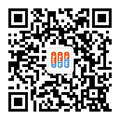Wi-Fi Alliance Certification
Ⅰ . Wi-Fi Alliance
(full name: International Wi-Fi Alliance, English: Wi-Fi Alliance, WFA for short), is a business alliance that owns the trademark of Wi-Fi.
It is responsible for Wi-Fi certification and trademark authorization, and is headquartered in Austin, Texas, USA.
Founded in 1999, the main purpose of the alliance is to promote the compatibility certification of Wi-Fi products on a global scale and to develop the wireless local area network technology of IEEE802.11 standard. Simply put, the Wi-Fi Alliance is a non-profit organization that promotes Wi-Fi technology and certifies whether Wi-Fi products meet interoperability standards. The Wi-Fi Alliance created the term "Wi-Fi" and owns Wi-Fi Fi series logo. Manufacturers can use the mark for certified products that have undergone interoperability testing.

 5. There are 3 categories of members: Contributor, Small Business, Implementer, and the fees are as above.
5. There are 3 categories of members: Contributor, Small Business, Implementer, and the fees are as above.

Ⅱ . Wi-Fi Alliance testing and certification process
1. Become a Wi-Fi member (different levels have different permissions, see the figure below). If your company wants to conduct a Wi-Fi certification test for a product, you must confirm whether your company is already a member of Wi-Fi. Because only Wi-Fi members can apply for the Wi-Fi certification test.
2. After becoming a member, apply for CID and test online.
3. Conduct tests and review test reports.
4. Pass the test and get a certificate

Ⅲ . Wi-Fi Alliance certification test content
1. Interoperability
Verify the interconnection and interoperability between the test equipment and the standard equipment of different chip manufacturers on the test platform.
2. Throughput
The test case defines the user scenarios and throughput limit requirements of different working modes such as single user, multi-user, Wi-Fi 802.11a/b/g/n, and examines the throughput performance of the device under test.
3. Protocol consistency
backoff mechanism.
Encryption mode (WPA2-AES, WPA-TKIP, WEP).
Protection measures for 802.11n devices to 802.11b and g devices, and protection measures for 802.11g devices to 802.11b devices.
802.11n protocol.
4. Wi-Fi Alliance Certification Scope
It is mainly aimed at several working modes of Wi-Fi 802.11a/b/g/n/ac/ax, and usually uses 2.4G UHF or 5G SHF ISM radio frequency band products. Products including smartphones, home appliances, computers and peripherals, network infrastructure and consumer electronics can all be certified.
5. Product certification method
Initial certification: The wireless LAN products developed by the manufacturer apply to the Wi-Fi Alliance for certification to ensure that product compatibility and related performance meet the relevant standards of the Wi-Fi Alliance. Certification needs to send samples to relevant institutions (such as Shenguang Standard Technology), and the product can only be authorized for production after the test meets the requirements
Derived certification: The manufacturer‘s product is similar in Wi-Fi technology design to a previously developed authorized product (called the parent model) that has passed the Wi-Fi Alliance certification test, and can pass Wi-Fi through derived certification. Alliance certified, no need to send samples for testing. Specifically, apply for and submit the product model on the official website of the Wi-Fi Alliance, declare the similarities and differences with the parent model, and produce it after the Wi-Fi Alliance judges that it can be authorized. The above two authentication methods can obtain authorization certificates after passing the authentication of Wi-Fi Alliance. Authorized products can use related Wi-Fi technologies and Wi-Fi trademarks stipulated by the Wi-Fi Alliance.
Recommended items
-

Which products require not only Japanese Telec certification but also JATE certification
Some products only need to apply for Japanese Telec certification, and some products not only need to apply for Telec certification, but also need to apply for JATE certification (also known as T certification, Electricity and Communications Law, Japan Telecom Law, Japan TBL certification, Telecommunications business law certification). It should be noted that both Telec cert...View more -

Six major testing FCC certification items for Wifi products
There are more and more WIFI products, and the development of mobile communication technology has prompted more and more composite devices to appear on the market, such as 3G wireless routing devices, which have both 3G and WiFi functions, and use 3G as high-speed network access....View more -

Xiaomi ecological chain WIFI test
Discover potential WiFi hidden dangers that may exist in the product, and optimize the Wi-Fi user connection experience.View more -

Latest WiFi alliance membership fees and common membership questions in 2022
Members‘ participation in WiFi alliance shows that your business is engaged in the development of the latest WiFi technology. In addition, you obtain the logo and technology use right of WiFi alliance....View more




